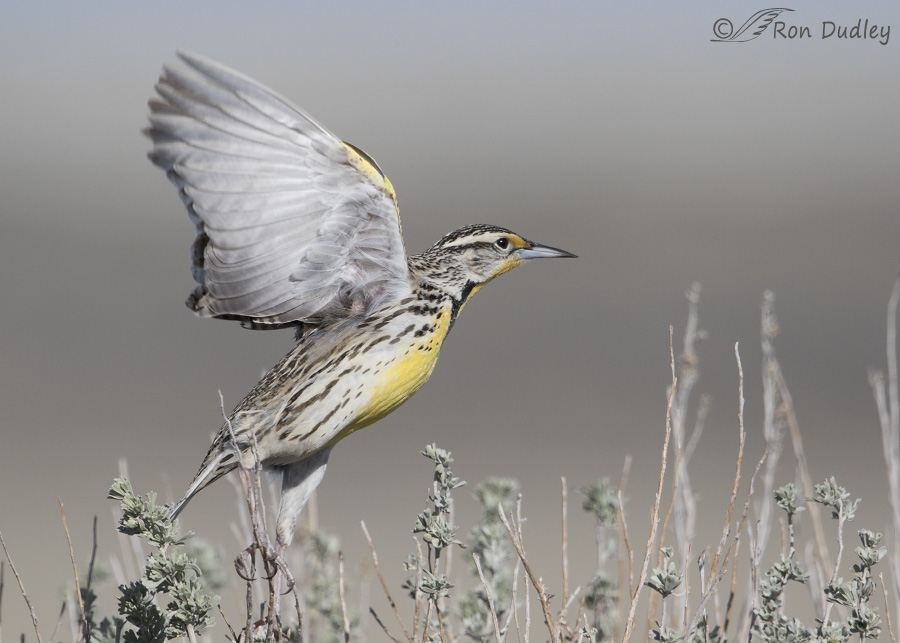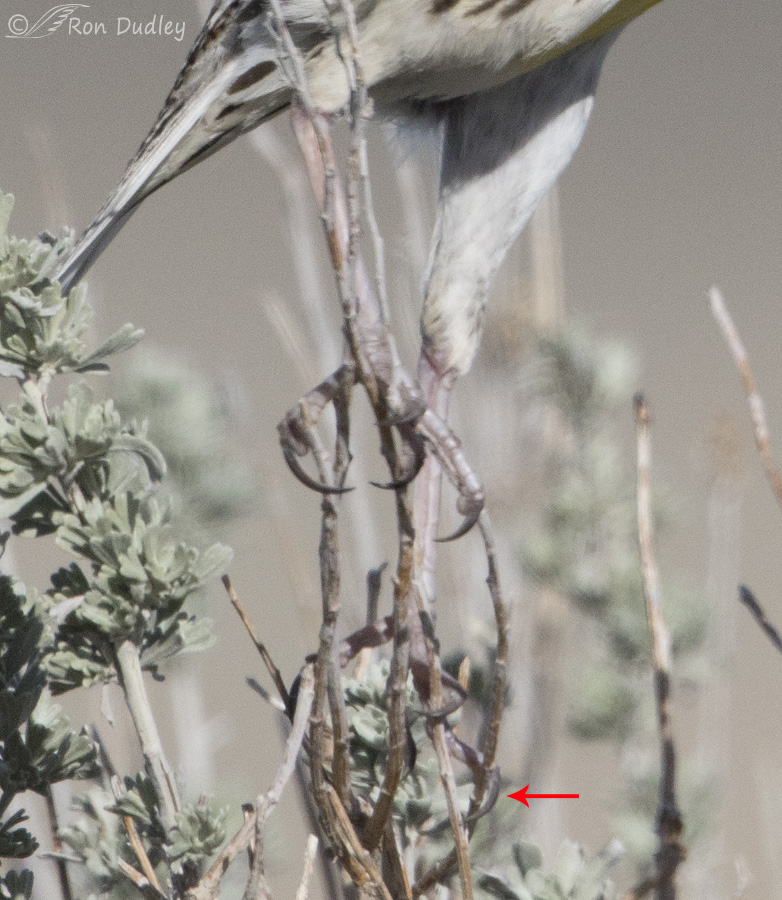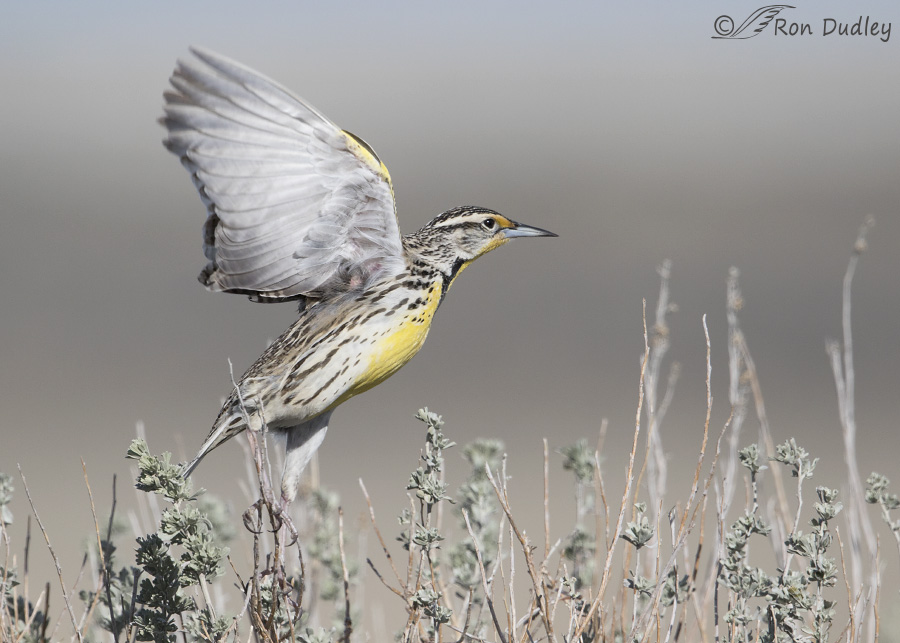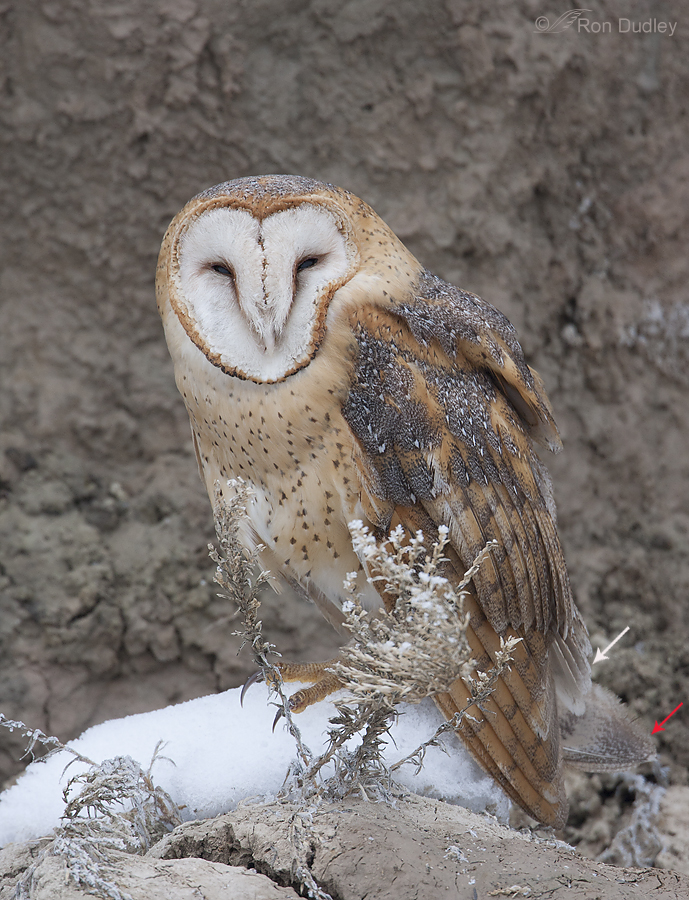It isn’t a mistake limited to meadowlarks but I do it far more often with them than with any other species.
I had intended to post this Western Meadowlark image, taken yesterday on Antelope Island, as a standalone for today’s post because I was pretty happy with it. So I processed it (as you see here) and placed it into the appropriate folder for later retrieval into the post. But when I went back to look at it I noticed a glaring imperfection that I’d missed earlier. Do you see it?
I’ll give you a hint – it’s a mistake that regular readers know I really hate to make! Do you see it now?
I suspect some spotted it and others didn’t. Where’s the left foot of the bird? It isn’t there because I clipped it (cut it off). Usually when that happens it’s because I clipped it in the full frame image as taken in the field but here it’s because I inadvertently cropped it out during processing. Dumb!
If you need further proof here’s a heavily cropped version of this portion of the original image that allows us to see the left foot I cropped out. The red arrow points toward one of its claws that I’d cropped out and there’s another claw just above it and to the left. It was easy to miss because the lower part of the leg and the foot are camouflaged by the twigs so well.
1/5000, f/6.3, ISO 500, Canon 7D Mark II, Canon EF 500mm f/4L IS II USM + EF 1.4 III Extender, not baited, set up or called in
Here’s what the image should have looked like if it had been cropped properly.
I clip meadowlark feet regularly, though usually I do it in the full frame image rather than during cropping. I think it’s because their legs, when extended, are longer than I expect them to be and their feet and parts of their legs are so often difficult to see on their typical twiggy perches.
Clipping body parts is considered to be highly undesirable when the photo is meant to be of the entire bird and that’s a lesson that was drilled into me years ago when I regularly posted images to Nature Photographers Network (NPN) for critique.
I posted this Barn Owl image to NPN about 9 years ago when I was a neophyte bird photographer. When I cropped that version of the image I thought the feathers marked by the white arrow were the furthest portion of the bird to the right so I cropped just a little further to the right to include them. I thought the structure marked with the red arrow was just something in the setting (other than the bird) so I cut off its tip in my crop. But NPN’ers dinged me for that (rightfully so) because that structure is actually the underside of the right wingtip.
There’s a lot of things to think about when we’re framing our subjects in the field and during cropping and we need to keep our wits about us and pay attention.
When we don’t we pay the price.
Ron
On an unrelated note, many readers are aware of the fine work of my friend and raptor authority Jerry Liquori. I (belatedly) learned yesterday that Jerry was one of three recipients of the 2017 American Birding Association Awards that were announced on March 2. Jerry’s knowledge of raptor identification, geographic variation, age-related plumage progression and molt is unmatched and he freely shares that knowledge with others. Huge congratulations to Jerry for the well-deserved recognition!
Here’s a link to the awards announcement if you’re interested.






Hearty congratulations to Jerry! YIPPEE!
Congratulations to Jerry.
Sadly many of my birds are amputees. And it is often not a processing issue.
I know the feeling, EC.
Yay! I spotted the cropped foot! It’s a very educational post for us neophyte bird photographers. I have a 100-400 lens so my problem is not getting close enough usually. I hardly ever cut anything off. I dream of someday having that problem. (Ha-Ha) Great photo by the way… love those very “angelic” under-wings!
Good for you, Joanne! You’re the first one to say they spotted the clipped foot before I pointed it out.
The most amazing thing about that image of the Mradowlark is that its beak is closed!!! It’s NOT SINGING!!!!!!
Patty, on this same morning I got three photos of another meadowlark in flight and in every one it was doing just that – singing!
You’ve trained me well; I was looking for some appendage to be clipped. However, I must be a sucky student because I didn’t find it until you pointed it out! 😛 You’re right. Those are some pretty long gams.
Congratulations to Jerry!
Don’t feel badly, Marty – that clipped foot is hard to see.
My first reaction was to wonder what happened to the bird’s right leg…then guessed it was behind the stick. Good news about Jerry’s award…(one of my best friend’s nsme is Ridgway!)
Yes, I’m very happy for Jerry, Patty.
Hi Ron,
I would not have expected a Meadowlarks legs to be that long and would never have noticed any fault with the crop unless you had pointed it out.
Changing AF point locations for birds taking flight? Close to impossible. But, for experienced shooters, like you, who can project the behavior of the bird, and get lucky, you can get the shot, sometimes. Trial and error, trial and error. I have read discussions about changing case settings and setting the tracking sensitivity to minus 2 in that this speed at which the camera refocuses. I have tried this but I am not sure it helps. To be honest, all those cases and customizing their settings is way too confusing for me and every time I consider doing so I just get frustrated.
Thanks for the post and the info on NPN.
I get frustrated by all those settings too, Frank. Very!
Ron – I’ve seen you reference the NPN before and I just gave them a sniff. Looks to cost about $39 per year to join. As an aspiring bird/wildlife photographer, would you consider this money well spent? Also, would you consider time spent browsing/posting and participating in the NPN time well spent? I am a member of Fred Miranda and was wondering if NPN would be a duplicate of sorts…or if it brings new things to the table.
Zaphir, It’s my understanding that participation at NPN has dropped over the years – something that’s happened to all three major nature photography critique sites because of the influence of social media. It’s been almost 6 years since I’ve been active there (though I do have a lifetime membership) so I’m not terribly knowledgeable of the current situation.
But when I was active it was incredibly worthwhile. I learned most (not an exaggeration) of what I know about bird photography at NPN. Once the “old-timers” figure out that you’re serious about learning (and that you’re not there just to get “great shot” comments) they’re free with their knowledge and advice, which is considerable.
One of the biggest mistakes newbies at NPN make is to expect comments from others on their images without reciprocating so if you join be sure to comment often on the images of others.
Other than browsing through the site a few times I have no experience with Fred Miranda.
Details, details, details! 🙂 The meadowlarks certainly have longer legs than I would ever have expected! I know I tend to get locked in on one area of a photo and “miss” other things particularly when appendages blend into something else! At least you had the pre-crop image to go back to. 🙂 Beautiful shot! I can’t imagine the time and effort that has gone into Jerry’s work……………:)
Judy, one thing I commonly do is put my active focus point on the eye of the bird but that leaves too little room at the bottom for their feet. If I take the time to change my active focus point I often miss “the shot”. And if I reframe by taking my thumb off of the focus button the eye sometimes isn’t as sharp as it should be.
Bird photography ain’t easy!
I feel your pain, Ron. I’ve ruined many an otherwise wonderful photo by clipping off a wing tip or tail edge–and usually not in processing, which is even more heartbreaking.
Exactly, Devin. When it’s done in the field (instead of during cropping) it’s a done deal and that really hurts when it’s an otherwise excellent image.